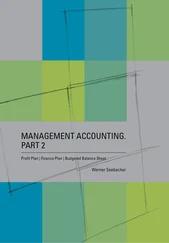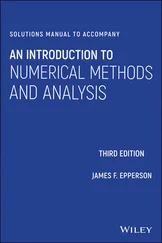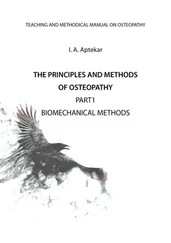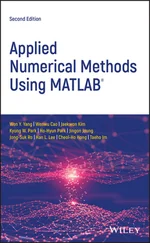Daniel J. Duffy - Numerical Methods in Computational Finance
Здесь есть возможность читать онлайн «Daniel J. Duffy - Numerical Methods in Computational Finance» — ознакомительный отрывок электронной книги совершенно бесплатно, а после прочтения отрывка купить полную версию. В некоторых случаях можно слушать аудио, скачать через торрент в формате fb2 и присутствует краткое содержание. Жанр: unrecognised, на английском языке. Описание произведения, (предисловие) а так же отзывы посетителей доступны на портале библиотеки ЛибКат.
- Название:Numerical Methods in Computational Finance
- Автор:
- Жанр:
- Год:неизвестен
- ISBN:нет данных
- Рейтинг книги:4 / 5. Голосов: 1
-
Избранное:Добавить в избранное
- Отзывы:
-
Ваша оценка:
Numerical Methods in Computational Finance: краткое содержание, описание и аннотация
Предлагаем к чтению аннотацию, описание, краткое содержание или предисловие (зависит от того, что написал сам автор книги «Numerical Methods in Computational Finance»). Если вы не нашли необходимую информацию о книге — напишите в комментариях, мы постараемся отыскать её.
Part A Mathematical Foundation for One-Factor Problems
Chapters 1 to 7 introduce the mathematical and numerical analysis concepts that are needed to understand the finite difference method and its application to computational finance.
Part B Mathematical Foundation for Two-Factor Problems
Chapters 8 to 13 discuss a number of rigorous mathematical techniques relating to elliptic and parabolic partial differential equations in two space variables. In particular, we develop strategies to preprocess and modify a PDE before we approximate it by the finite difference method, thus avoiding ad-hoc and heuristic tricks.
Part C The Foundations of the Finite Difference Method (FDM)
Chapters 14 to 17 introduce the mathematical background to the finite difference method for initial boundary value problems for parabolic PDEs. It encapsulates all the background information to construct stable and accurate finite difference schemes.
Part D Advanced Finite Difference Schemes for Two-Factor Problems
Chapters 18 to 22 introduce a number of modern finite difference methods to approximate the solution of two factor partial differential equations. This is the only book we know of that discusses these methods in any detail.
Part E Test Cases in Computational Finance
Chapters 23 to 26 are concerned with applications based on previous chapters. We discuss finite difference schemes for a wide range of one-factor and two-factor problems.
This book is suitable as an entry-level introduction as well as a detailed treatment of modern methods as used by industry quants and MSc/MFE students in finance. The topics have applications to numerical analysis, science and engineering.
More on computational finance and the author’s online courses, see www.datasim.nl.

 .
.
 of the form (2.13)is said to be positive if:
of the form (2.13)is said to be positive if:
 . Here,
. Here,  is a mesh function defined at the mesh points
is a mesh function defined at the mesh points  .
.
 achieves large values (and this happens in practice), we will have to make
achieves large values (and this happens in practice), we will have to make  very small in order to produce good results. Even worse, if
very small in order to produce good results. Even worse, if  does not satisfy the constraint in (2.18)then the discrete solution looks nothing like the exact solution, and so-called spurious oscillations occur. This phenomenon occurs in other finite difference schemes, and we propose a number of remedies later in this book.
does not satisfy the constraint in (2.18)then the discrete solution looks nothing like the exact solution, and so-called spurious oscillations occur. This phenomenon occurs in other finite difference schemes, and we propose a number of remedies later in this book.


 :
:
 is a constant that is independent of
is a constant that is independent of  . For example, in the case of schemes (2.10), (2.11)and (2.12)we have:
. For example, in the case of schemes (2.10), (2.11)and (2.12)we have:
 is constant and
is constant and  is zero. The solution
is zero. The solution  is given by a special case of (2.2), namely:
is given by a special case of (2.2), namely:
 tend to increase; in fact, at
tend to increase; in fact, at  , the derivatives are given by:
, the derivatives are given by:
 where
where  is changing rapidly, and it has been shown that classical finite difference schemes fail to give acceptable answers when
is changing rapidly, and it has been shown that classical finite difference schemes fail to give acceptable answers when  is large (typically values between 1000 and 10000). We get so-called spurious oscillations , and this problem is also encountered when solving one-factor and multifactor Black–Scholes equations using finite difference methods. We have resolved this problem using so-called exponentially fitted schemes . We motivate the scheme in the present context, and later chapters describe how to apply it to more complicated cases.
is large (typically values between 1000 and 10000). We get so-called spurious oscillations , and this problem is also encountered when solving one-factor and multifactor Black–Scholes equations using finite difference methods. We have resolved this problem using so-called exponentially fitted schemes . We motivate the scheme in the present context, and later chapters describe how to apply it to more complicated cases.










